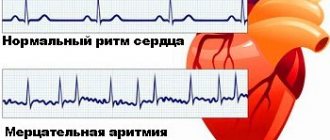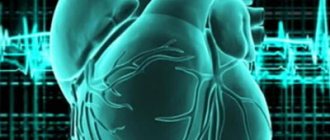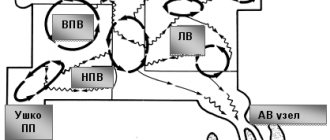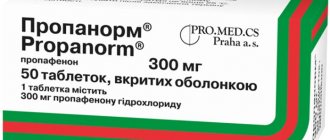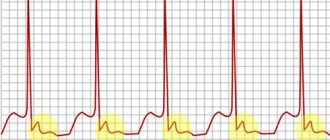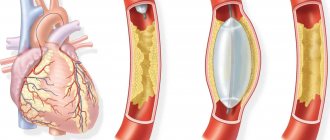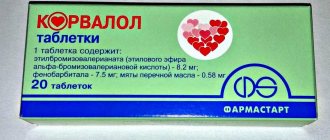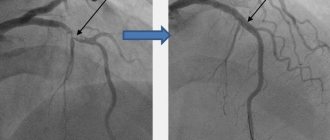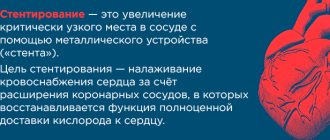History of origin
RFA began its development in the 80s of the twentieth century. It was then that S. Huang, together with his colleagues, conducted experiments on dogs. They used radiofrequency energy to disrupt the electrical communication between the atria and ventricles. For this purpose, a special catheter was used - an electrode.
The experiments were successful, and already in 1987, catheter ablation was performed on the first patient. From that moment on, the history of the development of ablation began - one of the most effective procedures in eliminating arrhythmia.
Indications for use
Radiofrequency ablation of the heart is not a procedure that a patient can choose for his or her treatment. The doctor decides when exactly this operation should be used. Indications for its implementation:
- unsatisfactory results when using drug treatment;
- the occurrence of side effects when taking medications;
- very high risk of sudden cardiac arrest.
Catheter ablation of the heart is one of the most effective ways to combat arrhythmia
RFA can combat the following diseases:
- ventricular tachycardia;
- reciprocal tachycardia;
- Wolff-Parkinson-White syndrome (WPW syndrome);
- enlargement of the heart.
Radiofrequency ablation of the heart. Complications
This method of treating arrhythmia is quite safe and low-traumatic. Problems may occur in less than 1% of patients. But still, radiofrequency ablation of the heart can have the following complications: cardiac tamponade, damage to its walls or valves, pneumothorax, thrombosis. Injuries to the esophagus and arteries are also possible. Hematomas can also be observed in the puncture area. Another type of complication is allergic reactions to contrast agents used for X-ray control. During catheter manipulation there is a risk of infection. Despite all this, there are a number of undoubted advantages that characterize radiofrequency ablation of the heart. Reviews from patients indicate that the procedure is less traumatic, the surgery takes a short time, and the recovery period is short.
Contraindications
We also recommend reading: Myocardial scintigraphy with stress
The catheter ablation procedure has many contraindications. These include:
- constantly elevated body temperature;
- persistent hypertension;
- lung problems;
- severe sensitivity to iodine;
- kidney failure;
- poor blood clotting.
However, there are also contraindications in which RFA is postponed until remission or complete cure. These include:
- infectious diseases;
- fever;
- anemia.
Preparation for RFA
To ensure that no complications arise after or during RFA, the patient must undergo a series of examinations. These include:
- blood analysis. It is carried out on the blood group and Rh factor. Tests are also taken to determine the presence or absence of hepatitis B and C and the human immunodeficiency virus. A test for the presence of syphilis is also carried out;
- ECG;
- stress test;
- Echo-CG;
- magnetic resonance imaging of the heart.
A stress test is a very important analysis before performing RFA, since nervous people have a very difficult time with this procedure.
If the examination results are positive, a period of RFA can be scheduled. In this case, the doctor prepares the patients by giving them some instructions. Two to three days before the procedure, you will need to stop taking certain medications. This applies to antiarrhythmic drugs, drugs that lower blood sugar, and so on. The patient must stop eating and drinking water 12 hours before the procedure. It is also necessary to shave the areas through which the catheter will be inserted.
Benefits of Catheter Ablation
It is not for nothing that RFA is one of the best procedures in the fight against many heart diseases. Among the advantages over surgical intervention, the following are worth noting.
1. Most patients tolerate this operation very easily. When a patient needs to undergo this procedure, it is safe to say that he will not be in the hospital for more than two or three days. This is a very short period when compared with surgery. During open surgery, the integrity of the human body is damaged, which leads to a long recovery. Therefore, the patient remains in the hospital for more than one week.
2. This procedure is a minimally invasive operation. You do not need to make large incisions to insert the catheter. The required needle is inserted through a small incision in the thigh area.
Inserting a catheter into an artery is a virtually painless procedure.
3. Painless procedure. After a patient undergoes open surgery, he faces terrible pain. To suppress it, he is given painkillers. This is not observed after ablation. A person feels discomfort only during the procedure. The sensation is more uncomfortable than painful. After the procedure is completed, the feeling of chest compression disappears within a few hours. It should be noted that you do not need to take painkillers.
4. Fast recovery after surgery. Within a couple of days after the operation, if the patient’s readings are normal, he can be discharged.
5. Cosmetic effect. After ablation there is no scar left. This is very different from open surgery, which involves making a large incision in the patient's chest and leaving a huge cosmetic defect. Small punctures left after the insertion of catheters heal quickly and completely disappear, leaving no scars behind.
Positive aspects of performing RFA
- efficiency;
- no effect on adjacent organs;
- lack of long-term rehabilitation;
- no scars remain on the body;
- no general anesthesia.
Feedback from patients indicates that RFA surgery is an expensive but effective procedure. Let's list some of them.
I am 40 years old. I began to suffer from attacks of arrhythmia since my student days. The biggest problems arose during pregnancy. Due to arrhythmia, she spent half of her time in the hospital under the supervision of a cardiologist. With age, the attacks became more frequent. Any physical activity led to a new attack. Emergency doctors visited my home more often than family and friends. I decided to undergo RFA. Operation was successfully completed. It lasted three hours. During the rehabilitation period, the attacks still persisted, but were not severe. Six months later everything returned to normal.
I had RFA surgery two years ago. Today I don’t remember about arrhythmia. In the postoperative period, the biggest problem was caused not by the heart, but by the leg, through the vein of which anesthesia was administered. Either I was not sufficiently composed at the beginning of the operation, or it was just the peculiarities of my body, but the bruise on my leg was enormous and it hurt terribly. The leg was actually being taken away. The RFA procedure itself did not cause any major problems.
Read also: Vishnevsky arrhythmia of feelings
Despite the advertising of RFA as a painless procedure, I can say that I personally felt very uncomfortable after the operation. The arrhythmia has not completely left me, although it has ceased to bother me with its former intensity. Only after a year had passed, I was able to do without special medications. Perhaps the doctors did not cauterize all the necessary areas. Now I feel good, but I advise those who decide to undergo RFA to weigh the pros and cons.
I suffered from flickering arrhythmia for about ten years. The attacks were accompanied by physical exertion and nervous situations. She was registered with a cardiologist and was treated first with antiarrhythmic drugs, then with blockers. The condition gradually worsened. The heartbeat became stronger and the attacks became more frequent. On the advice of a cardiologist, RFA was performed. The rehabilitation period was difficult. The chest pains subsided slowly. I suffered for about three months. Then gradually the heart rate began to return to normal. I consider the big disadvantage of RFA to be its cost. It seemed to me that for that kind of money everything should be more painless and recovery would be quick.
Carrying out the procedure
This procedure is carried out in a special room in which the following equipment should be present:
- special instruments required for cardiac catheterization;
- catheters-electrodes;
- apparatus for determining the vital signs of the human body;
- a device that records electrograms;
- defibrillator and other devices to restore the heartbeat.
The catheter is placed in the heart chamber, after which special equipment will be connected to record impulses
Before starting the operation, the doctor gives the patient a sedative (makes the person relaxed, calm) and performs local anesthesia. It is done in the puncture area, that is, the place where the puncture will be performed. After this, RFA is started.
1. For arterial access, either the right or left femoral artery is selected. The radial arteries can also be selected. The puncture area is treated with a special antiseptic solution, after which it is covered with a sterile cloth.
2. Then a guide needle is inserted into the vessel. Immediately after this, the doctor, using X-ray control, inserts a catheter-electrode into the artery. The catheter is inserted through a hemostatic tube, which delivers it directly to the heart.
3. After inserting the catheters, the doctor will place them in the chambers of the heart. Once this is completed, the catheters are connected to equipment that records the ECG signals. It is this process that allows us to establish the cause of the impulse, which is the source of the arrhythmia. If necessary, the doctor may perform special tests to induce the arrhythmia.
4. Ablation can be performed through the AV node or in any other part of the rhythm source. After the electrode impacts the heart tissues, they will begin to heat up and reach a temperature of 40˚C. Such heating provokes the appearance of a micro-scar and artificial AV block.
5. To maintain artificially created AV block, the doctor uses previously inserted electrodes.
6. To understand whether the procedure gives positive results or not, an ECG is performed again. If the results of the electrocardiological study reveal that the result is unsatisfactory, the doctor may implant a pacemaker. If the results are positive, the operation will be considered completed. In this case, the doctor removes catheters and electrodes from the patient.
Based on the results of the operation, a pacemaker can be installed for the patient to maintain a normal heartbeat.
7. A special hemostatic and antibacterial bandage is applied to the puncture site.
8. After completion of RFA, the patient must stay in bed for 24 hours. If the femoral artery was punctured during RFA, then he is prohibited from bending his legs.
The duration of this operation can range from one and a half to six hours. It all depends on the depth of the cause of the arrhythmia.
The patient is discharged 2-4 days after the end of the procedure.
What operations are performed for arrhythmia?
Surgical treatment used in the case of atrial fibrillation is carried out by various methods, such as radiofrequency ablation, pacemaker implantation and "maze"
Modern surgery offers several types of operations that solve problems such as cardiac fibrillation. These procedures are prescribed exclusively to patients who are not affected by conservative methods of therapy.
Pacemaker implantation
Atrial fibrillation is treated by implanting a pacemaker. After the operation, the patient feels a significant improvement in his condition. This effect persists for a long period of time. The installed device may need to be replaced in the future.
The pacemaker body is placed under the subcutaneous fat in the chest area. Using special electrodes, the device interacts with the myocardium and forces it to produce the correct rhythm.
This type of surgery for atrial fibrillation is contraindicated in the following conditions:
- Infectious diseases of an acute nature.
- Exacerbation of chronic pathologies.
- Mental illnesses that do not allow the doctor to adequately contact the patient.
These contraindications are usually temporary. Once the patient manages to get rid of them, the doctor will be able to assign him a day for surgery.
Before surgery, the patient must undergo a series of preparatory procedures. It is mandatory to do an ECG and conduct 24-hour blood pressure monitoring. No less significant are: EchoCG, blood and urine tests.
Additionally, an examination by doctors of various specializations is required, who can rule out whether the patient has obvious contraindications to undergoing surgery in the near future.
The surgical intervention consists of several successive stages:
- First of all, the patient is taken to the operating room. Here he is given local anesthesia of the required area.
- The surgeon now makes a small incision in the skin under the left collarbone. The subclavian vein is cut. Afterwards, a conductor and an electrode are inserted into it. The movement of this element can be monitored using x-rays.
- The tip of the electrode enters the cavity of the right atrium. The doctor finds the most successful place where the required modes of myocardial stimulation were observed.
- After finding a suitable location, the electrode is installed and fixed.
- Once this stage is completed, the surgeon begins suturing the titanium body to the cavity of the pectoral muscle on the left side.
Upon completion of the operation, the resulting wound is sutured and a sterile bandage is applied.
The surgical intervention, the purpose of which is to install a pacemaker, lasts on average about 2-3 hours. The patient does not feel any particular discomfort. At the end of radical treatment, the software device is configured.
The patient must remain in the hospital for several days after the operation so that the doctor can monitor his condition. If there are no deviations, he can continue to undergo rehabilitation at home.
The final cost of pacemaker implantation depends on several factors. On average, a person needs to pay from 100 to 200 thousand rubles for a medical procedure.
Radiofrequency ablation of the AV node
You should not eat or drink 4 hours before your scheduled surgery.
Cardiac pathology can lead to serious complications. Surgery for atrial fibrillation helps prevent their development. Often, with this diagnosis, radiofrequency ablation of the AV node is prescribed. During the treatment, stimulation of the right ventricle is performed.
Read also: Arrhythmia during excitement
Radiofrequency ablation is not indicated for all patients who suffer from atrial fibrillation. This treatment option is absolutely contraindicated for people who have blood clots in the heart cavity. Surgery is also not recommended for pregnant women, as the procedure may harm the health of the fetus.
The success of surgical intervention directly depends on the correct preparation for it. A few days before treatment, you must stop taking medications. You should not eat or drink 4 hours before your scheduled surgery.
The procedure is done under general or local anesthesia. The essence of the operation is to pass thin catheter-electrodes through large vessels. In this case, fluoroscopic observation of every action of the doctor is carried out.
During the operation, a therapeutic catheter is installed in the heart cavity. At its end, a high-frequency current is applied, which has a destructive effect on the arrhythmogenic substrate.
Upon completion of the operation, the surgeon conducts a repeated examination of the organ and system whose operation is disrupted by arrhythmia. If the symptoms of the disease persist, the doctor performs several more radiofrequency treatments. On average, this procedure takes from 30 minutes to 4 hours.
Radiofrequency ablation for atrial fibrillation costs the patient from 30 thousand rubles.
Catheter ablation
Catheter ablation is the most highly effective technique today; more than 90% of patients with various forms of arrhythmia, after the destruction of pathological foci, cease to feel attacks of arrhythmia
Radiofrequency ablation, which involves a catheter method of treatment, helps to remove the source of the disease by destroying it. Surgical intervention of the RFA type for atrial fibrillation is carried out with the participation of special catheters. The cost of such an operation will be indicated below.
To destroy the source of atrial fibrillation, different treatment options are used. As a rule, a method is used to destroy tissues by influencing them with ultrasound or laser. High frequency electrical energy is also effective for this disorder.
Catheter ablation is prohibited for patients with the following contraindications:
- Hypertensive crisis.
- Lung diseases.
- High body temperature.
- Poor blood clotting.
- Kidney failure.
Before starting treatment, the patient must undergo a full diagnostic examination, thanks to which it is possible to identify existing contraindications to surgical intervention. It is imperative to take blood and urine tests, check your heart rhythm and the current condition of your heart. Additionally, examination of the core for stress resistance is required.
Before the operation, the patient is given a sedative. It helps you fully relax and forget about worries. Afterwards local anesthesia is administered. It is done in the place where the skin will be punctured.
The cost of treatment with this method depends on the degree of complexity of the surgical intervention. Prices for the procedure in clinics start from 19,800 rubles.
"Maze" method
Before surgery, the patient must undergo a number of mandatory preparatory procedures to check for contraindications
The operation, called “Labyrinth,” is the most popular and effective for atrial fibrillation. With its help, it is possible to get rid of the factors that lead to the development of the disease.
There are several types of Operation Labyrinth. Each new version of the procedure solves the problems that arose upon completion of the previous version of the treatment.
As mentioned earlier, the Labyrinth-type operation went through many modifications during its existence. Thanks to its change, it was possible to solve the problem of identifying sinus node dysfunction and intraatrial conduction delay.
The third treatment option combines all the existing advantages of previous versions. In addition, it is quite simple to carry out.
Arrhythmic procedures, including cauterization of the problem area, are indicated for patients in whom the following pathological processes have been identified:
- Atrial fibrillation, in which there are no structural pathologies of the heart.
- Ineffectiveness of drug therapy.
- Symptomatic rhythm disturbance.
- Lack of results after percutaneous ablation.
It must be remembered that this type of operation has a number of contraindications. It is not suitable for patients with the following conditions:
- Sudden increase in the size of the left atrium.
- Pulmonary form of hypertension.
- Liver or kidney failure.
- Low left ventricular output.
General contraindications that are indicated before heart surgery are also taken into account.
Before going for surgery, the patient should be examined for contraindications. Laboratory tests and instrumental diagnostic measures are required.
When prescribing this type of surgery to relieve atrial fibrillation, the doctor may raise the question of the need to replace anticoagulant-based therapy. Also, immediately before the radical treatment itself, the patient should stop taking antiplatelet agents, if they are used.
Patients with atrial fibrillation who have been recommended the “Labyrinth” treatment method are interested in the cost of this type of surgical intervention. The average price of this procedure is limited to 500 thousand rubles.
Possible problems
Radiofrequency ablation of the heart belongs to the category of procedures in which there are almost no postoperative problems. The risk of RFA is minimal. As a percentage, the possibility of a negative consequence does not even reach 1%.
However, not all patients are immune from complications. These include:
- people who have problems with blood clotting;
- people with diabetes;
- aged people. People over seventy are most susceptible to complications.
Complications that can occur both immediately after the operation and after some time include:
- The occurrence of bleeding at the site of puncture of the artery.
- Damage to the vascular wall. It may be disrupted while advancing the guidewire or catheter.
- Formation of blood clots that can spread through the arteries.
- Narrowing of the lumen of the pulmonary veins.
- Irregular heart rhythm, which leads to worsening arrhythmia. In this case, a pacemaker is implanted.
- Disruption of normal kidney function.
Damage to the vessel wall by the catheter
Postoperative period
After the operation is completed, the patient is placed on bed rest. He is under constant medical supervision and monitoring of the condition of his body. In addition, the patient must undergo repeated ECG procedures at certain intervals. The first time electrocardiography is performed six hours after completion of ablation. Next in twelve hours, and the last one in a day.
Blood pressure and body temperature are also measured.
Immediately after the operation, the patient may experience discomfort in the chest area and mild pain in the area where the arteries were punctured. This is a normal post-operative condition. It lasts no more than thirty minutes and passes without taking any medications.
If such discomfort becomes painful or does not go away after thirty minutes, the patient should immediately tell the doctor about it.
The first few days a person may feel an irregular heartbeat. However, this problem goes away very quickly.
The patient can be discharged the next day after completion of RFA. There are cases when a person’s health condition allows him to leave the hospital within a couple of hours after the ablation. If there are no contraindications and the doctor allows the patient to be discharged immediately after the operation, then this person is not recommended to drive a car himself. It's best if someone takes him home.
Preparatory activities
It is necessary to prepare for cardiac ablation. Preparatory measures are divided into two groups. The first includes mandatory diagnostics of the patient’s body before surgery, and the second includes preparation on the part of the person himself.
The patient is hospitalized to perform a complete examination of the body. The list of necessary measures includes the following:
- Blood analysis. It helps the doctor evaluate how well the blood coagulation and hemostasis system is working. Also, from this study you can find out whether there are any infections or viruses in the patient’s body. It is especially important to make sure that there is no HIV, hepatitis, or syphilis.
A detailed blood test will help determine the presence of infections, because the patient may not even be aware of them. - Ultrasound examination of the heart. It allows you to check the structure of organ tissue, identify pathological changes, and also get a complete picture of blood circulation in the heart area.
- Electrocardiography. This method helps to evaluate the work of the heart, its activity, and rhythm. If the patient has an intermittent arrhythmia, then daily monitoring is required. Its essence is to record deviations throughout the day.
- Electrophysiological study. It is carried out through the esophagus and allows you to detect false impulses. It can be used if the ECG shows good heart function, but the symptoms that bother the patient indicate the opposite.
- Angiography of cardiac vessels. It is often prescribed if a person has coronary artery disease. But they are also used to check the arteries before surgery.
Angiography of the heart vessels will determine the location and condition of the vessels - Consultations of narrow specialists. It is necessary to visit a dentist, urologist, gynecologist, otolaryngologist.
The patient himself also needs to prepare for the ablation procedure. You should not take any medications the day before surgery. You should not eat anything on the day of the intervention. You can have dinner the night before, but only something light.
There is no need to worry on the day of surgery; it is important to prepare yourself for successful therapy.
Rehabilitation
The rehabilitation period after catheter ablation can range from two to three months. During recovery, the patient may be prescribed special antiarrhythmic drugs, such as Propanorm, Propafenone and others.
There are a number of rules, following which, the patient will be able to quickly recover and forget about the procedure forever. These include:
- Maintain a normal physical activity regimen. The patient should not overwork. But at the same time, you shouldn’t lie in bed all the time. It is necessary to find the optimal activity at which there will be no jumps in the heart rate.
- During the rehabilitation period, the patient should reduce salt intake to a minimum.
- It is worth eliminating the consumption of alcoholic beverages.
- Avoid coffee and all drinks that contain caffeine for two to three months.
- Follow a diet. In particular, this applies to fats of animal origin. Their consumption should be kept to a minimum. If possible, exclude it from the diet altogether.
- If you have a bad habit such as smoking, quit smoking.
Drinking alcohol after RFA procedure can lead to dire consequences
If the doctor was qualified, the operation was carried out successfully, and after the patient followed all the rules, then it will not be necessary to perform it again. Moreover, in this case, the recovery period will be minimal and without any consequences.
Causes of extrasystole
For extrasystoles of various etiologies, separate reasons for their formation are identified.
Reasons for the manifestation of functional extrasystoles:
- disruption of the nervous and mental activity of the body due to the use of alcohol and drugs, poor-quality food or poisoning with chemicals of various types;
- osteochondrosis;
- vegetative-vascular dystonia;
- regular physical activity;
- menstruation (in women);
- stress;
- frequent consumption of strong coffee.
Functional extrasystoles can occur in absolutely healthy people in a single instance and at any age.
Reasons for the manifestation of organic extrasystoles due to myocardial pathology:
- cardiac ischemia;
- pericarditis (inflammation of the pericardial sac);
- development of cardiosclerosis;
- advanced myocarditis (inflammation of the myocardium);
- extensive myocardial infarction;
- cor pulmonale and other diseases of the bronchopulmonary system;
- cardiomyopathy;
- acute heart failure;
- congenital and acquired heart defects;
- surgical intervention.
